Last year I was searching out various works of American land art via Google Maps. This is a similar post looking for some of Britain’s hillside figures, all of which are far older than any 20th-century artworks even if some of them aren’t as old as people hope. The antiquity of the Uffington White Horse in Oxfordshire has been established, however, the figure being estimated to be at least three thousand years old. The debate in this case is whether it represents a horse, a dragon or some other creature. What’s most fascinating about the figure is that it can’t be seen from any of the surrounding area, it’s only visible at the top of the hill; all other hill figures are intended to be viewed from a distance. There are other white horse figures carved into southern England’s chalky hillsides but the rest look like distinctly modern creatures. The Uffington carving resembles the kind of animals seen in cave paintings.
The Long Man of Wilmington in East Sussex provokes endless speculation as to its age and purpose. In the case of this figure and the Cerne Abbas Giant (below) there are no written records of them earlier than the 16th century whereas the Uffington horse is mentioned in medieval texts. This doesn’t rule out their being far older but it implies that their origin may be more recent and more mundane than some would like to believe. The satellite view of the Long Man currently on Google Maps shows that local wags have given the figure a smiley face.
The most famous erect penis in Britain can be found near the village of Cerne Abbas in Dorset. In the 1930s the Bishop of Salisbury petitioned the Home Office to have the giant phallus covered over, to no avail.
Not a hill figure, this is the remains of a crop circle I noticed when looking at Avebury from the air. There are no doubt more to be found, Wiltshire is apparently a popular area for circle makers.
Uno (1974) by Uno.
Given the usual subjects of concern here I have to mention these two album covers which make use of hill figures. The Uno sleeve is a design by Hipgnosis which is a lot more well-known than the album it decorates. The original XTC vinyl sleeve designed by Ken Ansell was textured card with the horse and lettering embossed into the surface. I’ve not been able to find a cover featuring the Cerne Abbas Giant although that doesn’t mean to say there isn’t one.
English Settlement (1982) by XTC.
Elsewhere on { feuilleton }
• The album covers archive
Previously on { feuilleton }
• Land art
• How to make crop circles

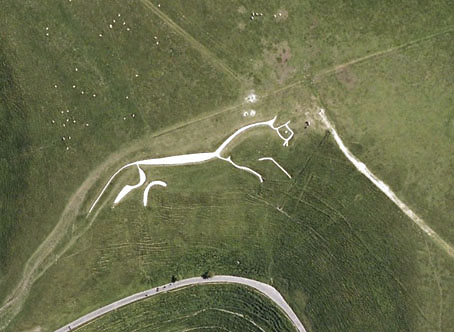
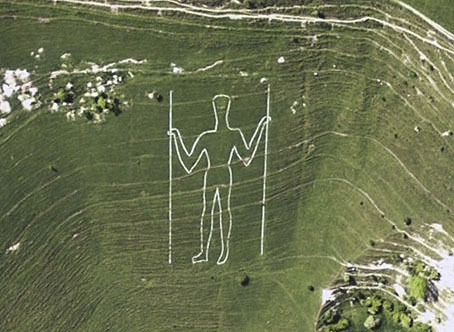
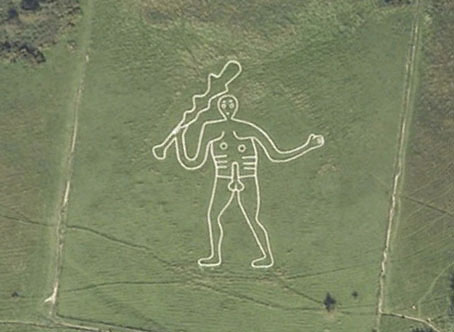
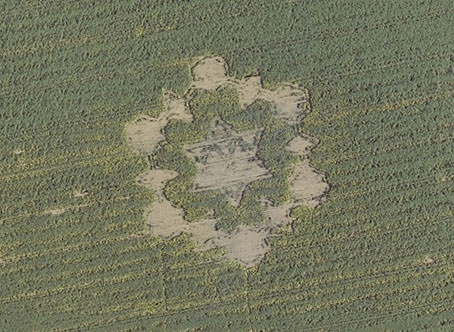

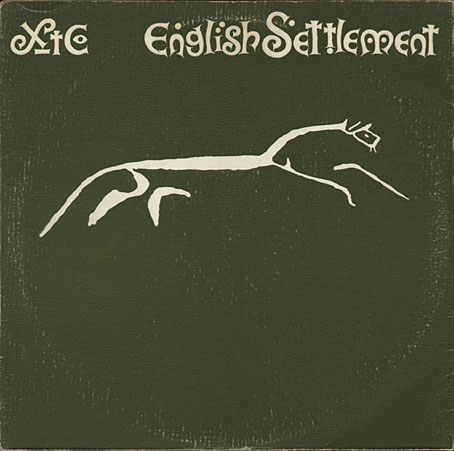
I went looking for a reproduction of the Long Man’s cameo appearance in Sandman
http://moblog.net/view/871686/long-man-of-wilmington-gateway-to-faerie
and via the Wikipedia article, I discovered the hilarity that results when neo-Druids get all protective about it.
http://news.bbc.co.uk/2/hi/uk_news/england/sussex/6263032.stm
Oh, I should have remembered that moment in The Sandman, I still have the original comic.
And, yeah, Druids…. Always showing they can be as pompous and humourless as the worst kind of Christians. Despite having great pagan sympathies I’ve never liked the way the Druids lay claim to Stonehenge and other places even though there’s little historical evidence to connect them to these sites. But at least Stonehenge is old. As noted above, the Long Man may be a lot more recent and not be a pagan creation at all.
Have a vague recollection of The Long Man appearing in Slaine in 2000AD round about ’86. Regardless of how old it is, those few lines offer up so much for your mind to read into it, offers up so much ‘otherly’ promise, an opening to something more.
Visited Cerne Abbas last year, got a laugh out of the conjecture that it was a crass slap in the face to Cromwell.